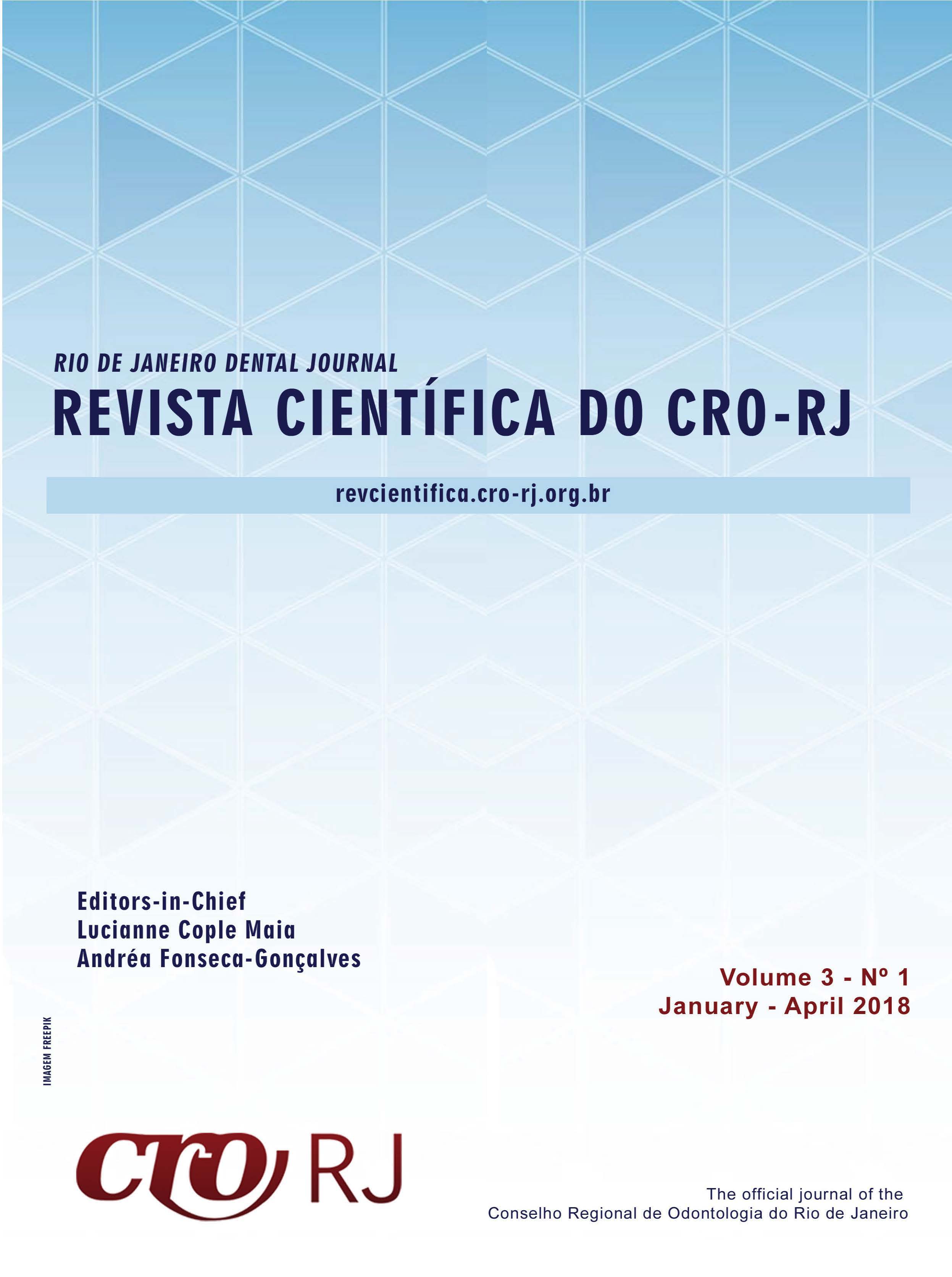Oral health and risk factors for dental caries of low-income scholars enrolled in a full-time study program
Oral health and risk factors for dental caries of scholars
Palavras-chave:
Dental caries, Child, Oral healthResumo
Many factors are associated with caries development in children, including the daily environment. Thinking that few studies evaluate oral condition in a full-time educational environment, this study aimed to identify the oral health conditions and risk factors for caries in children enrolled in a public educational program that are in a full-time study program. Data were collected from parents and children aged 3-12 years that were enrolled in the shelter, Rio de Janeiro, Brazil. The parents answered a questionnaire with socio-demographic, oral hygiene, habits and diet information. The children underwent clinical examinations. The association between children’s caries and: parents education level; socioeconomic status; dental biofilm; hypoplasia, gingival bleeding and malocclusion was performed (Chi-square or Fisher’s exact tests; p<0.05). Thirty-eight parents attended the interview. The predominant caregivers were mothers with a high school complete degree and belonging to low income family. From a sample of 350, 38 children (7.27±2.22 years) were examined during nine months. Most of these children were girls (63.2%) in the mixed dentition (69%) and without caries (61.9%). According to caries index, the highest average was found in the primary dentition (dmt-t = 1.20±2.12) while in the permanent one the mean was 0.35±0.86. Biofilm, hypoplasia, gingival bleeding and malocclusion were not associated with caries (p>0.05). The socioeconomics determinants and the risk factors were not considered predisposing factors for caries, which suggest that educational programs of full-time study exerts a positive influence on children’s oral health.
Downloads
Publicado
Como Citar
Edição
Seção
Licença
Copyright (c) 2018 Revista Científica do CRO-RJ (Rio de Janeiro Dental Journal)

Este trabalho está licenciado sob uma licença Creative Commons Attribution-NonCommercial-NoDerivatives 4.0 International License.


